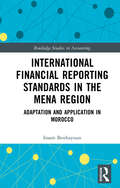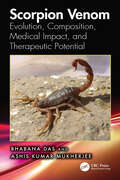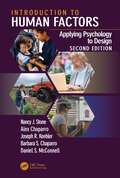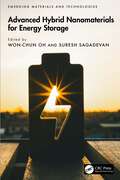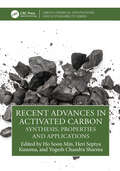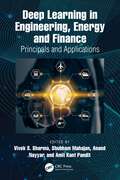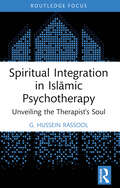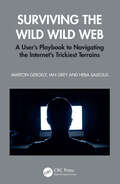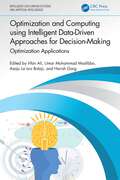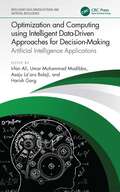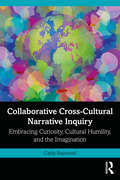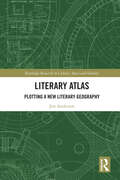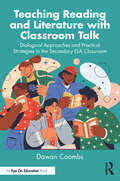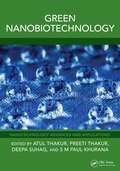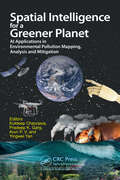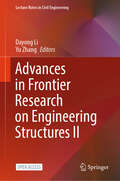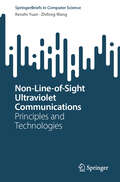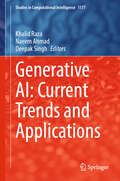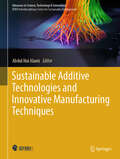- Table View
- List View
International Financial Reporting Standards in the MENA Region: Adaptation and Application in Morocco (Routledge Studies in Accounting)
by Issam BenhayounIn the ever-evolving landscape of global economics, accounting stands as the universal language of business. This book explores the vital role of accounting in articulating economic, social, and environmental activities. It provides a detailed comparison among Moroccan GAAP, IFRS, and US GAAP, highlighting the challenges and opportunities of harmonizing accounting standards in the context of Morocco's unique business environment.Each chapter is crafted to offer practical guidance and technical insights. From property, plant, and equipment (IAS 16) to intangible assets (IAS 38), leases (IAS 17), and inventory valuation (IAS 2), International Financial Reporting Standards in the MENA Region: Adaptation and Application in Morocco covers essential standards with a focus on their real-world applications. Special emphasis is placed on the preparation of cash flow statements (IAS 7), a crucial aspect often overlooked in the Moroccan accounting framework.Through practical case studies and comparative analyses, readers will gain a comprehensive understanding of the principles governing financial statements and the importance of transparency and investor confidence. This book is an indispensable resource for accounting professionals, academics, and anyone interested in the global standardization of financial reporting.
Scorpion Venom: Evolution, Medical Impact, and Therapeutic Potential
by Ashis Kumar Mukherjee Bhabana DasThis book provides a comprehensive overview of scorpion biology and the medical implications of their venoms. It presents the taxonomic classification, anatomy, morphology, and natural habitats of scorpions, detailing their reproductive processes. It further explores the chemical nature of scorpion venom, discussing its composition, toxicity, and physiological effects, as well as its varied functions and mechanisms of action on ion channels. The chapter also focuses on scorpionism, presenting comprehensive epidemiological data and clinical insights from across the globe and reviewing the origin, evolution, and intricate composition of scorpion venom, framing its functional complexity and evolutionary significance. The book also covers the preventative measures and current treatment strategies for scorpion envenomation. It also addresses the limitations of existing antivenom therapies and examines innovative approaches, including the use of pharmaceuticals to enhance treatment protocols. The final chapter provides the promising biomedical applications of scorpion venom toxins across various medical fields. It discusses the therapeutic potential of these toxins in treating a range of human diseases, from cancer and cardiovascular diseases to autoimmune disorders and diabetes. This book is intended for researchers, clinicians, and students of toxicology, pharmacology, and arachnology.
Introduction to Human Factors: Applying Psychology to Design, 2nd Edition
by Nancy J. Stone Alex Chaparro Joseph R. Keebler Barbara S. Chaparro Daniel S. McConnellThis textbook comprehensively introduces readers to the cutting-edge field of human factors psychology, offering real-world examples illustrating how experimental findings can be used to improve the design of tools and environments that we use every day. The revised second edition provides updated text, examples, pedagogical boxes, and references.Features: Showcases pedagogical boxes that end with thought questions to encourage student processing and application of the material Includes instructor materials such as PowerPoint slides, activities, and exam items to facilitate teaching for instructors who are new to the course Presents theoretical and practical implications of applying psychology to design with the use of examples Discusses anthropometric tools, anthropometric data collection methods, hand biomechanics, and hand tools Highlights diversity and inclusion with applications to the special population section in each chapter Introduction to Human Factors is an ideal read for senior undergraduate and graduate students in the fields of ergonomics, human factors, and psychology.Online teaching resources accompany this textbook, including PowerPoints, a test bank with answers, and an end-of-chapter questions and answers key for the instructors.
Advanced Hybrid Nanomaterials for Energy Storage (Emerging Materials and Technologies)
by Suresh Sagadevan Won-Chun OhIntegrating nanotechnology and sustainable energy frontiers, Advanced Hybrid Nanomaterials for Energy Storage explores the groundbreaking field of material design at the nanoscale for next‑generation energy storage solutions. This comprehensive text delves into the synthesis, characterization, and optimization of hybrid nanomaterials developed by combining the advantageous properties of diverse materials. This diverse range of materials includes metal oxides, carbon nanostructures, biopolymers, and functionalized surfaces. These materials have the potential to revolutionize energy storage technologies such as batteries and supercapacitors due to their synergistic properties and innovative applications.FEATURES Explores the latest advances in hybrid nanomaterial design for energy storage applications Discusses the benefits of combining different materials at the nanoscale range, exhibiting their combined properties which significantly outperform those of individual components Defines the various types of hybrid nanomaterials, including metal oxide/carbon nanocomposites, metal‑doped composites, and biopolymer‑based materials Focuses on the real‑world implications of hybrid nanomaterials in battery electrodes, supercapacitor electrodes, and other energy storage devices Summarizes the important role of these materials in transitioning to a clean and sustainable energy environment This book serves as an important resource for both industry professionals and academic researchers and is ideal for scientists and engineers working in advanced materials for energy storage applications.
Recent Advances in Activated Carbon: Synthesis, Properties and Applications (Green Chemical Innovations and Sustainability)
by Ho Soon Min Heri Septya Kusuma Yogesh Chandra SharmaThe world’s activated carbon market volume has increased rapidly in recent years due to environmental regulations. It is being used in a variety of fields including water treatment, air purification, and food processing. This volume in the Green Chemical Innovations and Sustainability Series studies the physical, biological, and chemical modification of activated carbon to enhance the adsorption performance. Recent experimental results indicating improved adsorption capacity are presented as well as novel applications using activated carbon. The authors focus on identifying potential precursors from agricultural waste, municipal waste, and industrial waste and investigate toxic pollutants.Features Demonstrates how researchers can produce synthetic adsorbents (activated carbon) via agricultural waste, industrial waste, and household waste. Describes the actions of adsorption capacity or percentage removal with respect to factors affecting the adsorption process. Investigates activated carbon's removal efficiency of dyes, organic compounds, pharmaceutically active compounds, heavy metals, pesticides, fungicides, herbicides, antibiotics, and other toxic pollutants Discusses the search for low-cost adsorbents that can be produced by using agricultural wastes, industrial wastes, and natural materials.
Deep Learning in Engineering, Energy and Finance: Principals and Applications
by Anand Nayyar Shubham Mahajan Amit Kant Pandit Vivek S. SharmaUnlock the transformative potential of deep learning in your professional and academic endeavors with Deep Learning in Engineering, Energy and Finance: Principals and Applications. This comprehensive guide seamlessly bridges the gap between theoretical concepts and practical implementations, providing you with the knowledge and tools to revolutionize industries and drive innovation. Delve into real-world applications and cutting-edge research that showcase how deep learning is redefining engineering processes, optimizing energy systems, and reshaping financial markets.This book: Explores deep learning applications across engineering, energy, and finance, highlighting diverse use cases and industry-specific challenges. Discovers how deep learning is driving breakthroughs in predictive maintenance, energy optimization, algorithmic trading, and risk management. Illustrates all the concepts connected to Deep Learning from head and heart with real-time practical examples and case studies. Stresses on skills needed to tackle future challenges, with a focus on emerging deep learning technologies oriented towards Solar Energy, SOM’s, Stock Market, Speech Technology and Many more. Whether you're a student eager to explore the latest advancements or a seasoned R&D professional seeking to enhance your skill set, this book offers invaluable insights and practical guidance to elevate your expertise.
Spiritual Integration in Islāmic Psychotherapy: Unveiling the Therapist's Soul (Islamic Psychology and Psychotherapy)
by G. Hussein RassoolSpiritual Integration in Islāmic Psychotherapy offers readers a profound exploration of the therapist's inner world and its impact on therapeutic practice.Through introspective reflections and practical insights, readers embark on a transformative journey into the world of an Islāmic psychotherapist, going beyond technical skills and theoretical knowledge by emphasising the character, intention, and spiritual connection of the therapist with God (Alláh). The book introduces the unique role of the Islāmic psychotherapist, discussing their responsibilities, skills, and qualifications. It emphasises the importance of ethical conduct, continuous learning, and self-reflection, recognising the profound influence of the therapist's character, intentions, and spiritual connection on the healing process. It also explores integrating Islāmic principles into therapeutic practice and provides guidance on tailoring interventions to align with the religious and cultural backgrounds of Muslim clients. Real-life case studies, practical techniques and strategies and concrete suggestions for incorporating Qur’ânic verses, supplications, and spiritual practices into therapy are featured throughout.Spiritual Integration in Islāmic Psychotherapy serves as an invaluable resource for Islāmic psychotherapists, empowering them to deepen their understanding of how their religion/spirituality intersect with their clinical work to ultimately better serve their clients.
Interrogating Nation-Statehood and the Citizen in Curriculum Development: Comparative Historical Cases (Studies in Curriculum Theory Series)
by Nicole GotlingThis book dives into the histories of nation-state-building and curriculum formation to explore the ways that they intertwine, form and inform each other.This book follows the understanding that nation-states have – and still do – develop their educational institutions, curricula, and teaching materials with specific goals and with a specific idea of the ideal student and citizen they want to create in mind. In particular, it advocates that analyzing multiple, idiosyncratic cases can inform the connection between what we learn, how we learn it, and who we become as citizens and further, that this is related not to linear or global phenomena, but to particular nation-states, curricula, and time periods. This book focuses on the comparison between four cases during the time of the large, map-changing events and period of the Prussian Wars (1864–1871) to make the intertwined relationships between nation-states and their curricula, designed to create future loyal citizens, more apparent. It makes a point of reconstructing each of the nation-states' historical national-political and educational processes, and then the reconstructed trajectories are compared both in their own trajectories over time throughout the 19th century and up until World War II and in relation to other nation-states' trajectories over the same long timespan.Exploring a new pathway into research on the intersection of education, curriculum, and nationalism and providing a new, extensively researched and formed methodological framework, it will appeal to researchers, academics, and postgraduates with interests in comparative and international education, curriculum studies, the history of education, nationalism, state-building, and textbook analysis.
Surviving the Wild Wild Web: A User’s Playbook to Navigating the Internet's Trickiest Terrains
by Marton Gergely Ian Grey Heba SaleousThe information security arena is often vague and confusing for internet users, both young and old. New traps are being devised daily, and falling into them can take legal, ethical, financial, physical, and mental tolls on individuals. With increasing cases of fake news, identity theft, piracy, spying, and scams surfacing, this book explains the risks of the internet and how they can be mitigated from a personal and professional perspective.Surviving the Wild Wild Web: A User’s Playbook to Navigating the Internet’s Trickiest Terrains is a readable guide addressing the malicious behaviors within internet cultures. Written in simple and jargon-free language, the book describes ten pillars of information security risks faced by all internet users. Each pillar will be detailed as a story, starting with the roots of the problem and branching out into tangential related issues and topics. Each chapter ends by detailing ways a user can avoid falling victim to cyber threats. It uses a combination of news articles, topical current events, and previously published academic research to underpin the ideas and navigates how users interact with the World Wide Web. The book aims to create a generation of internet-literate readers who can spot the pitfalls of the internet in their personal and professional lives to surf the web safely.This guide will appeal to any individual interested in internet safety, with a potential readership extending to students and professionals in the fields of computer science, information systems, cybersecurity, business, management, human resources, psychology, medicine, education, law, and policy.
Integrity of Randomized Clinical Trials: How to prevent research misconduct and ensure transparency
by Khalid S. KhanToday, scientists are expected to be more accountable and transparent than at any other time in history. Globally, the pursuit of knowledge creation enjoys a place of distinction, and the public expects to reap considerable benefits from the innovative contributions made by researchers. It is, therefore, more important than ever that ethics, transparency, and professionalism explicitly guide research integrity.Despite the clear importance of acquiring a fundamental understanding of clinical trials in the context of health research and innovation, medical training generally fails to cover clinical trial integrity in its curriculum, including it neither at the undergraduate nor at the postgraduate levels. This new book provides a curriculum to address this gap, offering best practice guidelines to improve the quality, openness, and trustworthiness of clinical trials and filling a current void in the market.Key Features: The first book on clinical trial integrity Provides clear guidance on how to ensure probity in peer review, appraisal of trials, and investigation of complaints concerning misconduct in clinical trials Trains and supports researchers globally on how to undertake trials with integrity Ensures that the increasing demand for public documentation of all aspects throughout the lifecycle of a clinical trial can be met This book is essential reading for master and doctoral students undertaking courses in clinical trials, epidemiology, and medical statistics and an invaluable reference for medical journal editors and peer reviewers, clinicians who recruit patients into trials, pharmaceutical industry professionals, patient and public representatives who engage in clinical trials, systematic reviewers, guideline writers, and funders and regulators of clinical trials.
Optimization and Computing using Intelligent Data-Driven Approaches for Decision-Making: Optimization Applications (Intelligent Data-Driven Systems and Artificial Intelligence)
by Harish Garg Irfan Ali Umar Muhammad Modibbo Asaju La’aro BolajiThis book comprehensively discusses nature‑inspired algorithms, deep learning methods, applications of mathematical programming, and artificial intelligence techniques. It further covers important topics such as the use of machine learning and the Internet of Things and multi‑objective optimization under Fermatean hesitant fuzzy and uncertain environment.This book: Addresses solving practical problems such as supply chain management, smart manufacturing, and healthcare analytics using intelligent computing and discusses solving the fuzzy inference system in ant colony optimization for traveling salesman problem Presents an overview of artificial intelligence (AI) and explainable AI decision‑making (XAIDM) and illustrates a data‑driven optimization concept for modeling environmental and economic sustainability Discusses machine learning‑based multi‑objective optimization technique for load balancing in integrated fog‑cloud environment Explains the use of heuristics and metaheuristics in supply chain networks and the use of fuzzy optimization in sustainable development goals Discusses sustainable transit of hazardous waste, green fractional transportation system, perishable inventory, M‑estimation of functional regression operator, and intuitionistic fuzzy sets applications The text is primarily written for graduate students and academic researchers in diverse fields, including operations research, mathematics, statistics, computer science, information and communication technology, and industrial engineering.
Optimization and Computing using Intelligent Data-Driven Approaches for Decision-Making: Artificial Intelligence Applications (Intelligent Data-Driven Systems and Artificial Intelligence)
by Harish Garg Irfan Ali Umar Muhammad Modibbo Asaju La’aro BolajiThis book comprehensively discusses nature-inspired algorithms, deep learning methods, applications of mathematical programming and artificial intelligence techniques. It will further cover important topic such as linking green supply chain management practices with competitiveness, industry 4.0, and social responsibility.This book: Addresses solving practical problems such as supply chain management, take-off, and healthcare analytics using intelligent computing Presents a comparative analysis of machine learning algorithms for power consumption prediction Discusses a machine learning-based multi-objective optimization technique for load balancing in an integrated fog cloud environment Illustrates a data-driven optimization concept for modeling environmental and economic sustainability Explains the use of heuristics and metaheuristics in supply chain networks and the use of fuzzy optimization in sustainable development goals The text is primarily written for graduate students, and academic researchers in diverse fields including electrical engineering, electronics and communications engineering, mathematics and statistics, computer science and engineering.
Collaborative Cross-Cultural Narrative Inquiry: Embracing Curiosity, Cultural Humility, and the Imagination
by Cathy RaymondCollaborative Cross-Cultural Narrative Inquiry invites readers to participate in the experience of engaging in and reflecting on the author’s collaborative cross-cultural narrative research online with Parvana, an Afghan woman living in Afghanistan until August 2021.Storied reflections along with excerpts from interviews, storied data, doctoral assignments, peer feedback, analytic memos, and more illustrate how ethical practice, vulnerability, and care informed the collaborative exploration of Parvana’s life story and her daily multiple literacy practices for navigating Afghan society as an Afghan woman. Each chapter of this book offers reflections on individual elements of our cross-cultural narrative research to give readers an evocative account of our collaborative journey; at the end of each chapter, reflective prompts invite readers to engage in focused practice and explorations as they develop their own meaningful and mindful narrative studies. With its emphasis on research and relationship ethics, self-reflective practice, cultural humility, and creative approaches to analysis and representation, the cross-cultural narrative study at the heart of this textbook also offers readers insights into developing mindful and meaningful cross-cultural narrative research rooted in curiosity, humility, and the imagination.This textbook is suitable for qualitative researchers, professors, students, and others from a wide variety of fields who are interested in teaching, researching, or learning more about designing and engaging in narrative research.
Government and Economic Growth in the 21st Century: A Classical Liberal Response (Routledge Frontiers of Political Economy)
by Juan E. CastañedaThis book offers an alternative view of the economy – and indeed, society – that does not rely on an ever-expanding government to address the problems which individuals typically face during their lives.The book is a Classical Liberal response to the way leading economies have been (mis)managed in the last three decades and the principles and models that have guided such policies, particularly since the outbreak of the Global Financial Crisis in 2007–09, which has resulted in enlarged government deficits and public debt, as well as more intrusive government regulation and virtually no economic growth. The book does not only criticise the current dominant view which favours ever-growing governments but also puts forward an alternative set of policies and institutions compatible with long-term growth in a free(er) economy. The book is structured around three major themes: (1) what classical liberalism is (or should be) and why it still matters, (2) how state-sponsored capitalism hinders the well-functioning of the market economy as well as being a bad recipe for economic growth and individual freedom, and (3) which are the essential Classical Liberal institutions necessary for a free market economy to flourish.This volume will be accessible not only to specialists in the subject but also to a well-informed audience interested in current economic issues, the role of government in the economy, and how history, traditions, the political system, and economics shape the institutions that help us to explain how markets function and their outcomes.
Literary Atlas: Plotting a New Literary Geography (Routledge Research in Culture, Space and Identity)
by Jon AndersonThis book documents a new approach to literary geographies based around the Literary Atlas of Wales. It introduces an innovative "plotted" approach which empowers reading, creates connections to localities, histories, and communities, and inspires interest in literature and geography.It showcases how literary geographies can be mobilized through the plotted approach to reading. Through documenting the Literary Atlas of Wales project, this book outlines how the plotted approach was used to engage with English-language novels set in Wales. It argues that the future of this interdisciplinary subject area should be premised upon nurturing instability, turbulence, and experimentation in order to produce new insights which can change the way we understand the relations not only between literature and place but also between other modern categories, including academic disciplines.This book will be of interest to all readers of literature, human geography, mapping, heritage studies, and tourism. It will be beneficial to those interested in the domains of cartography, creative humanities, cultural sociology, human geography, literary studies, and print cultures.
Teaching Reading and Literature with Classroom Talk: Dialogical Approaches and Practical Strategies in the Secondary ELA Classroom
by Dawan CoombsThis book presents a framework for conceptualizing and enacting dialogic approaches to teaching literature and reading in your classroom. Dialogical approaches have often been used in secondary classrooms for teaching writing by incorporating students’ lives and experiences into the English Language Arts (ELA) curriculum. But what might it look like to create reading moments that bring texts to life by allowing students to use their own identities and experiences as the foundation for their interpretation? The most current research in reading, motivation, culturally responsive teaching, and even neuroscience points to the power of dialogical approaches to not only engage students in reading texts, but—when used consistently and repeatedly—help increase students’ reading growth and achievement. Dialogical approaches can be particularly helpful for struggling readers, English language learners (ELLs), and neurodivergent students. This book explores dialogical approaches to teaching reading and literature in secondary ELA classrooms with descriptions of hands-on activities, models of dialogical strategies, and real-time examples from ELA and reading classes. Each chapter includes motivating, accessible, and research-based methods and tools that help students connect content to their lives and explore a diversity of perspectives. With resources such as assignment sheets and rubrics, this is an essential book for middle and high school ELA teachers, reading coaches and interventionists, teachers working with ELLs, and pre-service teachers who are looking to better understand and utilize dialogical approaches to support their students in transforming their reader identities.
Green Nanobiotechnology (Nanotechnology Advances and Applications)
by Atul Thakur Preeti Thakur Deepa Suhag Khurana, S. M. PaulThis book provides a comprehensive exploration of green nanotechnology covering principles, applications, and ethical considerations.Green Nanobiotechnology begins with an introductory exploration of nanotechnology, followed by in-depth discussions on the synthesis of ozone-friendly nanomaterials and the emerging practice of green synthesis. It delves into the diverse applications of green nanoparticles, spanning biomedical applications, tissue engineering, biosensors, antimicrobials, and vaccine development. It explores applications of nanotechnology in environmental sciences including bioremediation, microengineered ceramics for environmental protection, and the modification of advanced nano-polymer composites. The environmental fate and ecotoxicological implications of nanomaterials are thoroughly examined, followed by discussions on the energy-saving potential and sustainable fuel development in the realm of green nanotechnology. The book concludes with a focus on responsible and ethical considerations, addressing the legal, socio-economic, and ethical impacts of nanotechnology, making it an important resource for researchers, academics, and professionals in nanobiotechnology and biomedical sciences.
Spatial Intelligence for a Greener Planet: AI Applications in Environmental Pollution Mapping, Analysis and Mitigation
by Pradeep K. Garg Kuldeep Chaurasia P. V. Arun Yingwei YanWith rapid advancements in AI, this book reveals how AI can be a powerful tool in reducing pollution and fostering sustainability. It highlights the integration of geospatial techniques with AI for enhancing capabilities in mapping, analysis, and mitigation of environmental pollution. Starting with foundational concepts in AI, geospatial technology, and pollution, the book addresses air, water, soil and thermal pollution, emphasizing their harmful impacts. Through real-world case studies and advanced research, it showcases AI and geospatial technology's revolutionary role in pollution mitigation, exploring AI-driven sensors, satellite imagery, and associated networks for precise and efficient pollution monitoring and management.
The Cybersecurity Trinity: Artificial Intelligence, Automation, and Active Cyber Defense
by Donnie W. WendtThis book explores three crucial topics for cybersecurity professionals: artificial intelligence (AI), automation, and active cyber defense (ACD). The Cybersecurity Trinity will provide cybersecurity professionals with the necessary background to improve their defenses by harnessing the combined power of these three concepts. The book is divided into four sections, one addressing each underlying concept and the final section discussing integrating them to harness their full potential. With the expected growth of AI and machine learning (ML), cybersecurity professionals must understand its core concepts to defend AI and ML-based systems. Also, most cybersecurity tools now incorporate AI and ML. However, many cybersecurity professionals lack a fundamental understanding of AI and ML. The book's first section aims to demystify AI and ML for cybersecurity practitioners by exploring how AI and ML systems work, where they are vulnerable, and how to defend them. Next, we turn our attention to security automation. Human-centered cyber defense processes cannot keep pace with the threats targeting organizations. Security automation can help defenders drastically increase the speed of detection and response. This section will discuss core use cases that security teams can implement, including intelligence processing, incident triage, detection, and response. This section will end with strategies for a successful security automation implementation and strategies that can lead to failure. Accelerating the defense is but one side of the equation. Defenders can also implement ACD methods to disrupt and slow the attacker. Of course, ACD spans a broad spectrum, including some that could raise legal and ethical concerns. This section will explore some ACD methods and discuss their applicability, as well as the need to include business, legal, and ethical considerations when implementing them. Security teams often treat AI, automation, and ACD as disparate solutions, addressing specific problems. However, there is much overlap, and security teams must develop a cohesive approach to realize the full potential. The last section combines these three concepts to form a comprehensive strategy. The resulting strategy will have AI as the foundation, incorporating automation to speed up defense and ACD to disrupt the attacker. What You Will Learn: Understand the many uses of AI and ML and the concepts underpinning these technologies. Learn how to protect AI and ML systems by recognizing the vulnerabilities throughout their lifecycle. Integrate AI and ML-based systems to enhance cybersecurity. Develop security automation processes to enhance situation awareness, speed the time to respond, and increase the bandwidth of the limited security operations staff. Develop an ACD strategy to slow the attackers while minimizing legal and ethical concerns. Design a comprehensive strategy with AI as the foundation, incorporating automation to speed up defense and ACD to disrupt the attacker. Who This Book is for: The primary audience is cybersecurity professionals looking to improve their organization's security posture by leveraging AI and ML-based security tools and combining them into a comprehensive strategy incorporating automation and ACD. This target audience will have a cybersecurity background and an interest in AI and ML. Higher education would be a secondary audience.
Proceedings of Third International Symposium on Sustainable Energy and Technological Advancements: ISSETA 2024, Volume 1 (Lecture Notes in Electrical Engineering #1251)
by Pierluigi Siano Gayadhar Panda Shaik Affijulla Malabika BasuThis book contains selected papers presented at Third International Symposium on Sustainable Energy and Technological Advancements (ISSETA 2024), organized by the Department of Electrical Engineering, NIT Meghalaya, Shillong, India, during February 24–25, 2024. The topics covered in the book are the cutting-edge research involved in sustainable energy technologies, smart building technology, integration and application of multiple energy sources; advanced power converter topologies and their modulation techniques; and information and communication technologies for smart micro-grids.
Advances in Frontier Research on Engineering Structures II (Lecture Notes in Civil Engineering #535)
by Yu Zhang Dayong LiThis open access book focuses on the research of advanced structures and anti-seismic in civil engineering. The book features the most cutting-edge research directions and achievements related to civil and structural engineering. Subjects in this book include Engineering Structure and Seismic Resistance Structural Mechanics Analysis Components and Materials Structural Seismic Design 3D Printing Concrete.
Non-Line-of-Sight Ultraviolet Communications: Principles and Technologies (SpringerBriefs in Computer Science)
by Renzhi Yuan Zhifeng WangThis book provides a comprehensive review and the latest progress of ultraviolet communications. Optical wireless communications employing electromagnetic waves in optical wavebands as information carriers can achieve higher communication bandwidth compared with radio frequency based wireless communication. However, the good directionality of optical waves degrades its non-line-of-sight transmission ability for avoiding obstacles. The ultraviolet communication employs the ultraviolet light in “solar blind” waveband (200–280 nm) as information carriers. The name “solar blind" is derived from the fact that the solar radiation in 200–280 nm is strongly absorbed by the ozone layer of the atmosphere such that little ultraviolet lights can reach the earth's surface. Therefore, ultraviolet communications enjoy low background radiation noise compared with other optical wireless communications. Besides, the strong absorption effect of ultraviolet lights in the atmosphere also guarantees a good local security due to the verified low-probability-of-detection. Therefore, the ultraviolet communication becomes a promising non-line-of-sight optical wireless communication technology and attracted increasing research attentions in recent decades. This book mainly focuses on the key principles and technologies of ultraviolet communications, including the channel modeling, achievable information rate, full-duplex ultraviolet communication, relay-assisted ultraviolet communication, non-line-of-sight ultraviolet positioning, and some future prospects of ultraviolet communications.
Generative AI: Current Trends and Applications (Studies in Computational Intelligence #1177)
by Deepak Singh Khalid Raza Naeem AhmadThis comprehensive volume focuses on the latest advancements in Generative AI, including state-of-the-art techniques and models that are pushing the boundaries of what is possible. It covers recent developments in areas such as Generative AI models, transfer learning and Natural Language Processing (NLP) highlighting their potential to revolutionize content generation and creative applications including OpenAI, LangChain, NLTK and their practical implementations across diverse domains. The volume provides insights into emerging research areas, novel architectures, and innovative approaches in Generative AI, giving searchers a glimpse into the exciting future of the field. The aim is to offer readers a deep understanding of Generative AI and how it can be harnessed to tackle complex real-world challenges.
New Progress of Regulations and Judicial Practice of Intellectual Property
by Deli Cheng Xinmiao Yu Klaus BacherThis open access book brings together two types of cases at home and abroad. One is the latest influential cases in the field of intellectual property rights in the past three years, and the other is the classic intellectual property cases in the world. The types of cases involve typical cases in the fields of patents, trademarks, copyrights, unfair competition, etc., involving a wide range of intellectual property laws and a complete range of categories. Some cases have been a sensation, and some legal issues have been raised or clarified for the first time in relevant judgments. Many cases not only have a wide range of social influence but also have typical legal application significance. Many cases involve facts and legal issues that go beyond the case and the adjudication itself and have greater reference significance. At the same time, we also attached the different opinions of some case judgments, such as the Concurring Opinion and the Dissenting Opinion in the US judgment, reflecting the different understandings of different judges on the application of the law. This part is also very meaningful.
Sustainable Additive Technologies and Innovative Manufacturing Techniques (Advances in Science, Technology & Innovation)
by Abdul Hai AlamiThis book offers a unique vantage point on converting ideas into products using additive manufacturing. Intended for novice and beginner designers, the process of industrial design is explained in order to translate verbal requirements into design constraints with the aid of the House of Quality approach. The product is then sketched and ported into a CAD software for modelling. The reader is then guided to the selection of the most appropriate additive manufacturing process, including PLA, resin, or metal 3D printing, along with material combination to meet their requirements. The book puts recyclability at the forefront of material discussion, from energy and circular economy perspectives, as they are central to achieving economic and energy efficiency. This is done by presenting the reader with do-it-yourself projects, which include processes like sand casting and lost PLA/Wax, that can be followed in a step-by-step manner using conventionally available tools.
